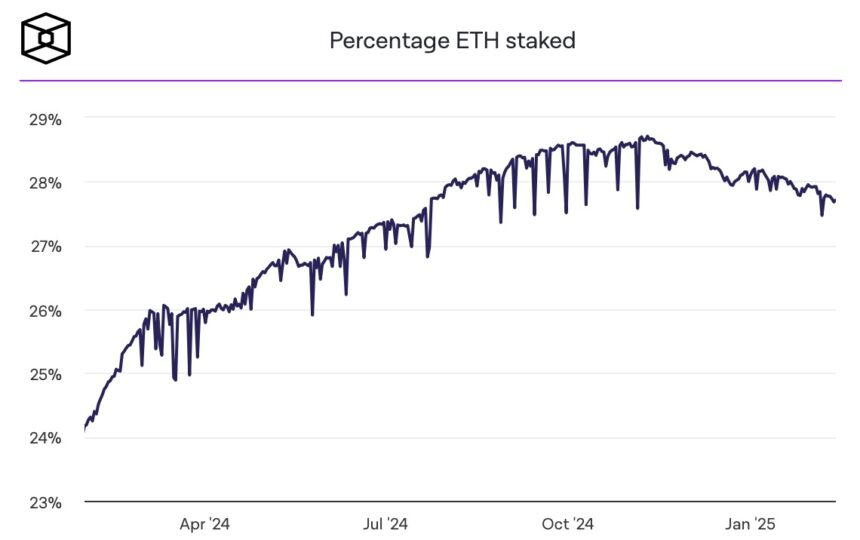The Ethereum (ETH) staking rate has seen a decline, falling to 27%, marking a pause in its long-standing growth trend. This level was last observed in July 2024, reflecting a 2% decrease from its peak. The drop in staking participation suggests a shift in investor sentiment, with many seeking higher yields in alternative blockchain networks.
Lido Maintains Dominance in Liquid Staking Derivatives
Liquid staking derivatives (LSDs) continue to play a crucial role in the Ethereum staking ecosystem. Lido leads the sector with a 69% market share, followed by Binance staked ETH, which holds 15%. Lido’s revenue in January reached $89 million, aligning with its 12-month average of $85 million.
While LSDs offer investors flexibility, they also raise concerns about centralization risks. Lido’s growing dominance has sparked renewed debates on Ethereum’s network decentralization. Despite the staking rate drop, the current 27% level is still considered sufficient for network security.

Investors Exploring New Blockchain Networks
Ethereum remains a vital infrastructure for DeFi and NFT ecosystems, yet investor interest has gradually shifted towards other blockchain networks offering higher returns. The evolving landscape of staking is leading to a more balanced demand, as the market matures beyond its initial high-growth phase.
Experts emphasize that Ethereum’s future will be shaped by staking trends and centralization risks, both of which will impact network security and protocol development. These dynamics could significantly influence the long-term viability of the Ethereum ecosystem.
For the latest updates on blockchain and staking trends, visit Dey There.



















































































































